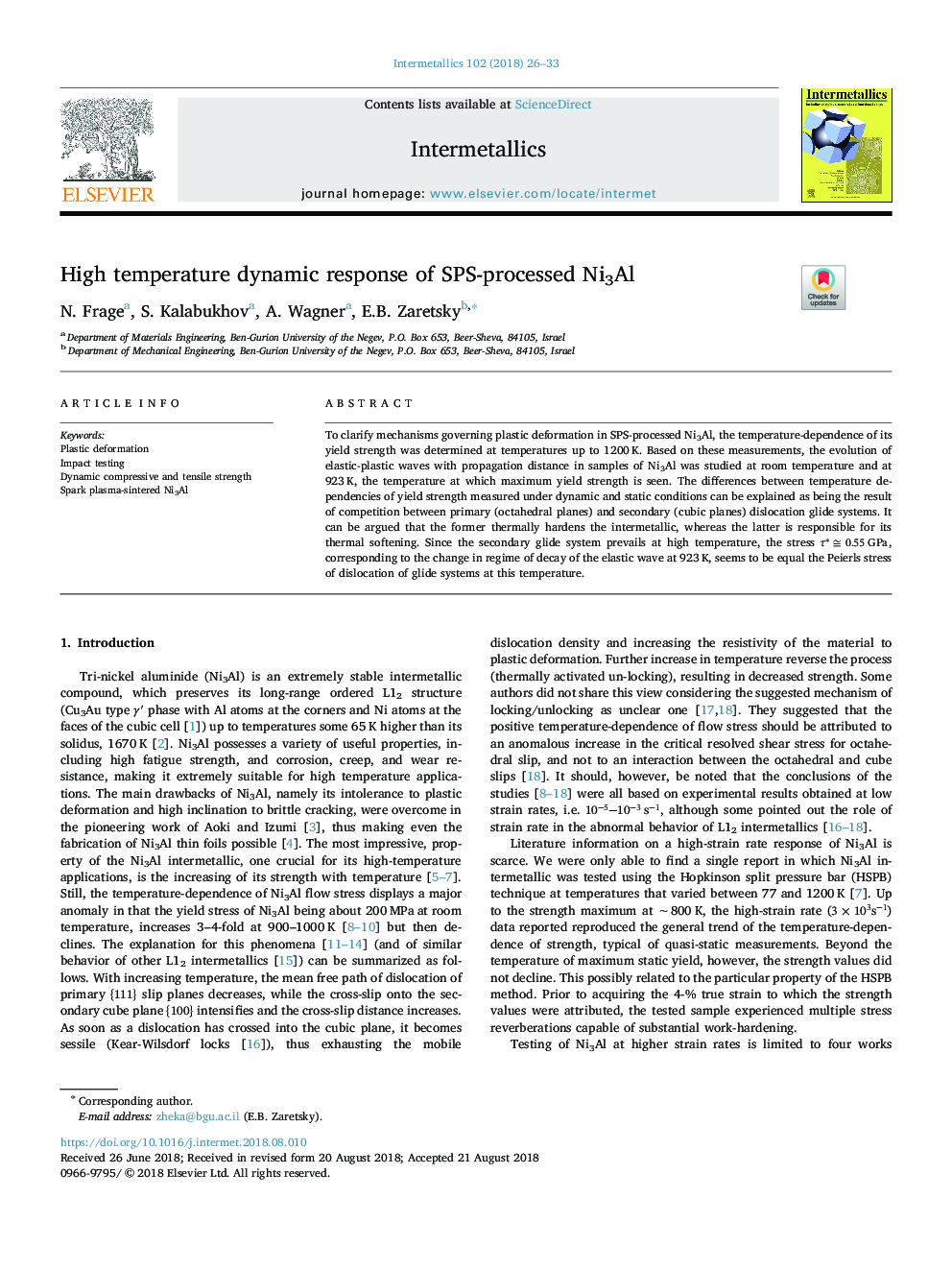| Article ID | Journal | Published Year | Pages | File Type |
|---|---|---|---|---|
| 10136014 | Intermetallics | 2018 | 8 Pages |
Abstract
To clarify mechanisms governing plastic deformation in SPS-processed Ni3Al, the temperature-dependence of its yield strength was determined at temperatures up to 1200â¯K. Based on these measurements, the evolution of elastic-plastic waves with propagation distance in samples of Ni3Al was studied at room temperature and at 923â¯K, the temperature at which maximum yield strength is seen. The differences between temperature dependencies of yield strength measured under dynamic and static conditions can be explained as being the result of competition between primary (octahedral planes) and secondary (cubic planes) dislocation glide systems. It can be argued that the former thermally hardens the intermetallic, whereas the latter is responsible for its thermal softening. Since the secondary glide system prevails at high temperature, the stress Ïââ
0.55GPa, corresponding to the change in regime of decay of the elastic wave at 923â¯K, seems to be equal the Peierls stress of dislocation of ã110ã{100} glide systems at this temperature.
Keywords
Related Topics
Physical Sciences and Engineering
Materials Science
Metals and Alloys
Authors
N. Frage, S. Kalabukhov, A. Wagner, E.B. Zaretsky,
